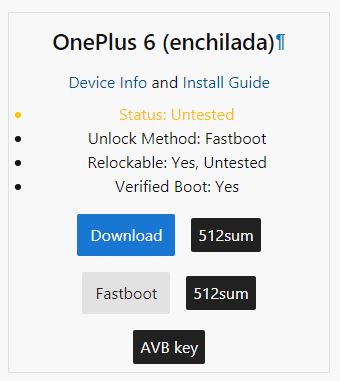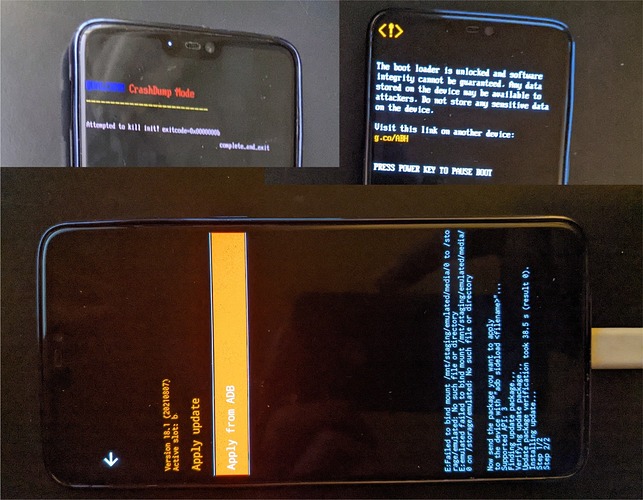Does GPS work at all these days without microg?
The gps should work even without microg (at least it works for me and I use lineageos without microg, sometimes it takes a while to find the position and usually you have to be outdoors).
microG has absolutely zero impact on GPS.
UnifiedNlp is a fused location provider for location lookups without GPS, to quickly get a rough location or for devices without GPS.
Like your weather app might need a location, but it doesn’t need GPS accuracy, it’ll query the system for last location which queries fused, which would query UnifiedNlp, which would query its enabled plugins such as DejaVu or Ichnaea.
In this case DivestOS includes UnifiedNlp, but not microG.
Okay, that’s good to know. Thanks for the feedback.
You’re wrong. On the one hand, I know that I’m a thorn in your side. On the other hand, I respect the assessment of the GOS specialist Daniel Micay. Other specialists have a different opinion. So everyone is free to form their own opinion and act accordingly.
No. You’re wrong! ![]() You’re not a thorn in my side.
You’re not a thorn in my side.
The main difference is I will never intentionally put another Euro in Google’s pocket, so buying a Pixel is out of the question, and no one has yet offered me a free one with a dead battery. This eliminates CalyxOS and GrapheneOS, for me.
Here is a current statement by thestinger, a little more vague, but reading between the lines… And another by mar-v-in that convince me to stay with the GrapheneOS, LineageOS or DivestOS approach of avoiding spoofing and microG. As you say, YMMV.
thestinger:
“GrapheneOS is also hard at work on filling in gaps from not bundling Google apps and services into the OS. We aren’t against users using Google services but it doesn’t belong integrated into the OS in an invasive way. GrapheneOS won’t take the shortcut of simply bundling a very incomplete and poorly secured third party reimplementation of Google services into the OS. That wouldn’t ever be something users could rely upon. It will also always be chasing a moving target while offering poorer security than the real thing if the focus is on simply getting things working without great care for doing it robustly and securely.” Features overview | GrapheneOS
mar-v-in:
“Nothing is without costs. Using microG breaks many apps or makes them behave incorrectly. And I hope it’s clear to users that microG may have security issues that are not present in original Play services (and vice-versa). However I believe (and I guess the same is true for most microG users), that using an open-source and intentionally privacy-preserving implementation of the features provided by Play services is worth these costs. Your opinion may vary.” [Feature discussion] Alternative signature spoofing · Issue #1467 · microg/GmsCore · GitHub
CalyxOS ships with a very strict version of signature spoofing that grants only the microG components the permission and only lets them spoof the Google signature.
I appreciate in the above (somewhat embarassing) discussion at github, archived, what was said about sudo and apps. The less the better, on phones, IMHO.
All right, @anon46495926. Nice to see that no thorn is interfering with our view.
An Android samrtphone or tablet with stock Android with Google Play Services surveillance bug on board is taboo in my circle of friends. Therefore, any regularly maintained CustomROM without Open GApps, NikGApps and the like is first welcome and gladly tested. Most users in our clan have only one smartphone, their daily driver, and therefore make compromises.
For example, to do online banking, our banks force us to use either a smartphone with Google services or Chip-TAN manually with a TAN generator. For convenience, the smartphone variant is preferred. And this is where microG steps into the breach.
It’s no different with our Covid alert.Actually, it needs the Google Play Services to use it, but microG is also the better alternative for us here.
The examples could be continued. The bottom line for us (me) is: as less Google as possible. Every halfway sensible person should be aware that there is no such thing as one hundred percent data security and privacy.
OnePlus 6 (enchilada)
Previous story
There are plenty of CustomROMs for the Oneplus 6 A6003 (enchilada). Since Google Play-Services are taboo in my circle of friends, but services of this kind are needed, microG services are a welcome alternative.
My friend first thought of e.foundation’s /e/OS, because no highly security protected system is needed, but values increased privacy and data sparing. After reading the (erroneous) /e/ installation instructions and stories of the elaborate installation (e.g. 42-step instructions) for the OnePlus 6T, he no longer trusted himself to install it and came to me.
So I received a OnePlus 6 A6003 with OxygenOS 9.0.8 (Android 9-pie) that first upgraded to OxygenOS 10.3.12 with security patch level July 2021. This morning, the OnePlus 6 then received the brand-new release OxygenOS 11 ‘stable’ based on Android 11 to finally let the “Google bottle ghost” out and install a CustomROM without Google Play service. It will eventually be the ArrowOS 11.0 Vanilla Official + Minimal microG NoGoolag Edition.
Of course I remembered the “white spot” aka ‘Status: Untested’ in portfolio of DivestOS Mobil Devices.
Status: Untested

My curiosity is high to see if the bootloader is indeed ‘Relockable’. However, I’m confident. Nevertheless, aware of the risk that things can go wrong when changing the OS, I now get to work. To be continued …
OnePlus 6 (enchilada)
Interim status
My very first OS-change ended with a brick in a way I had never seen before:
QUALCOMM CrashDump Mode
Attempted to kill init! exitcode=0x0000000b
complete_and_exit
You can find a lot of comments and advice on the WWW. Except for one, none of them worked for me. Some bad news even give rise to unpleasant feelings. But this thread saved my A6003. Now I’m back on OOS 5.1.11 (Android 8.1) with locked bootloader and starting from scratch. To be continued …
.
Update
I failed a second time and ended up again in:
QUALCOMM CrashDump Mode
Previously I had flashed DivestOS 18.1 / 11.0 / R via FASTBOOT:
fastboot -w
fastboot flash system_a system.img
fastboot flash boot_a boot.img
fastboot flash dtbo_a dtbo.img
fastboot flash vbmeta_a vbmeta.img
fastboot flash system_b system.img
fastboot flash boot_b boot.img
fastboot flash dtbo_b dtbo.img
fastboot flash vbmeta_b vbmeta.img
fastboot reboot bootloader
fastboot flash avb_custom_key avb_pkmd.bin
fastboot reboot bootloader
fastboot flashing lock
Now I’m on Oxygen OS 5.1.11 (Android 8.1) again (Thank you very much!) and this time I’ll only upgrade to Oxygen OS 10.3.12 July 2021 (Android 10) - and give it another try. To be continued …
Oh God, can you believe that! No more than 3 consecutive replies are allowed. Please edit your previous reply, or wait for someone to reply to you.
OnePlus 6 (enchilada)
Summary
The test day was very long, the end result is not satisfactory. Rarely has an Android smartphone challenged me as much as the OnePlus 6 A6003. With a lot of effort, but as a reward I learned a lot, I was able to get the following current CustomROMs to work:
Arrow-11.0 Vanilla Offical (only without microG NoGoolag Edition, otherwise the ROM won’t boot anymore), /e/OS-Q by e.foundation, LineageOS-18.1 (Core), LineageOS-17.1-for-microG, LineageOS-18.1-for-microG, PixelExperience 11 (Plus edition) stable (as the only ROM with Google Play service), installed for reference, as highly compatible with the device.
Basis was always OSS firmware 10.3.12. Attempts to install a custom recovery on OSS firmware 11 basis failed. The receipt for this was several times: `QUALCOMM CrashDump Mode. I tried Arrow recovery, e-Recovery, Lineage-Recovery, Pixel-Recovery, SHRP SkyHawk Recovery and TWRP.
Currently, the OnePlus 6 is now running the latest Oxygen-10.3.12 firmware, LineageOS-18.1-for-microG and Lineage-Recovery. The bootloader is open.
I installed DivestOS 18.1-20210807 three times via FASTBOOT and three times via ADB SIDELOAD - also with Divest-Recovery, which automatically acts as a custom recovery after installation. Each time the ROM started without showing its logo and got stuck in a bootloop. @Bradzilla117 had a similar experience. The fact that a DOS ROM does not boot or gets stuck in a boot loop is not a new experience for me, unfortunately.
By the way: Google Pixel 4a 5G (bramble) runs perfectly with CalyxS 2.8.0, microG, Verifired Boot, Re-Locked Bootloader.
@fossys
thank you for testing.
Can you clarify, are there two issues at play here?
One that seems to always end in crashdump mode with more then just DivestOS.
And two that DivestOS loops after showing DivestOS boot animation?
Ok so I am in the process of flashing for OnePlus 7 pro,
The failed to find update binary (in file) for fastboot zip seems to give an error
@SkewedZeppelin
On my OnePlus 7 Pro, I flashed and booted lineage os 18.1 to get on Android 11. I have sideloaded on slots a and b and I get a error at 94% saying adb:failed to read command: no error
I have flashed, wiped, rebooted and occasionally I think it completed on both slots. Regardless, I can’t get pass the bootloader unlocked error message (so it doesn’t even get to bootlogo screen)
It appears I get a error message can’t load android system
My uncle tried on his 6t. I don’t think he properly flashed when attempting. I do have a OnePlus 6 but have not been using it lately.
@SkewedZeppelin
Oh no, I had more than two problems! :o)
I got the impression - the main problem was the brand new OOS 11 release. The first CrashDump Mode happened when flashing Lineage-Recovery.
The second CrashDump occurred when I installed via FASTBOOT the DivestOS files system.img, boot_a boot.img, dtbo_a dtbo.img, vbmeta.img and wanted to reboot. Again, OOS 11 was still installed as firmware base.
The third CrashDump occurred: OOS 11 and TWRP 3.5.2_9-0*.img
The first successful flash succeeded with firmware OSS 10.3.12, PixelExperience-Recovery and PixelExperience-11-ROM. Then /e/OS-Q with eRecovery and LineageOS-17.1-for-mircoG with Lineage-17.1-Recovery.
DivestOS
There was no DivestOS boot animation to see!
The system booted until the hint …
<!>
The boot loader is unlocked an sodrware …
… and repeated itself permanently.
Is it necessary to flash on top of oxygen os Android 11? I’ve been trying on lineage os 18.1
No, I’ve banned OSS 11 until further notice. I’ve experienced ‘CrashDump Mode’ three times with OOS 11. That’s more than enough (see above). All successful flashes were done on firmware base OSS 10.3.12 (Android 10 - July 2021).
I feel like the build is android 11 at least on what I see from the download for OnePlus 7 pro. Flashing android 11 on 10 could also be the problem
The OSS 11 ‘stable’ (Android 11) has only been released for a few days. All CustomROMs have been based on OSS 10 (Android 10). I was able to install CustomROMs based on AOSP 10 + 11 successfully with base OSS 10.3.12 - except DivestOS.
@fossys
a bramble build is now up
I have also committed a potential fix for the op6/7 and their variants, but no builds up yet:
The files are already saved on the host machine.
Just making sure you saw my update binary error couple post up.
I never experienced crashdumps, only couldn’t find the ROM when booting
I was looking at the new changes from your link. This looks like I have to drop to 17.1? or can I stay on 18.1?
-edit- oh never mind I see 18.1 modifications. Thanks!
-one plus 7 pro
